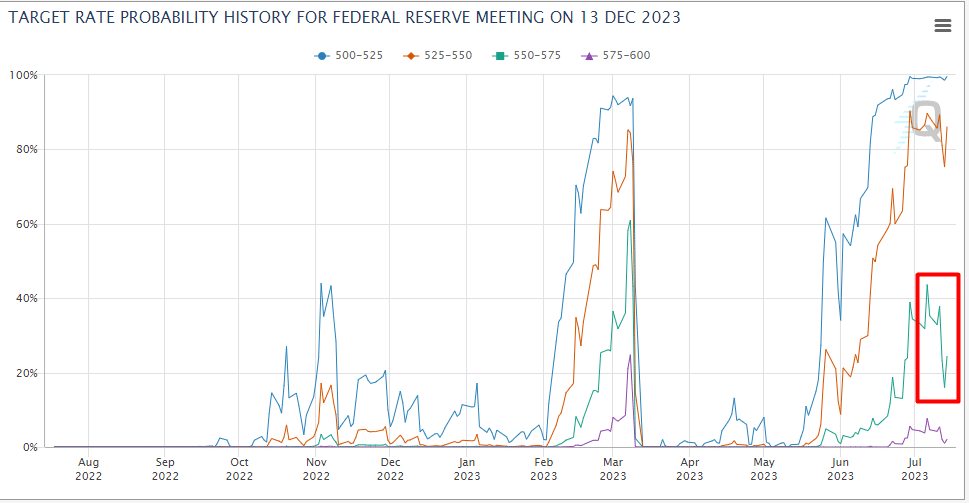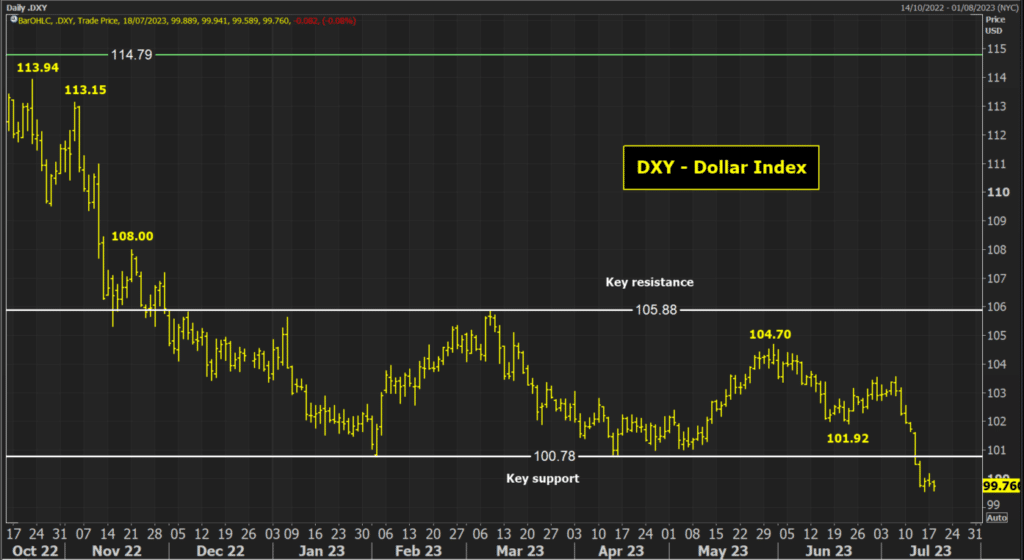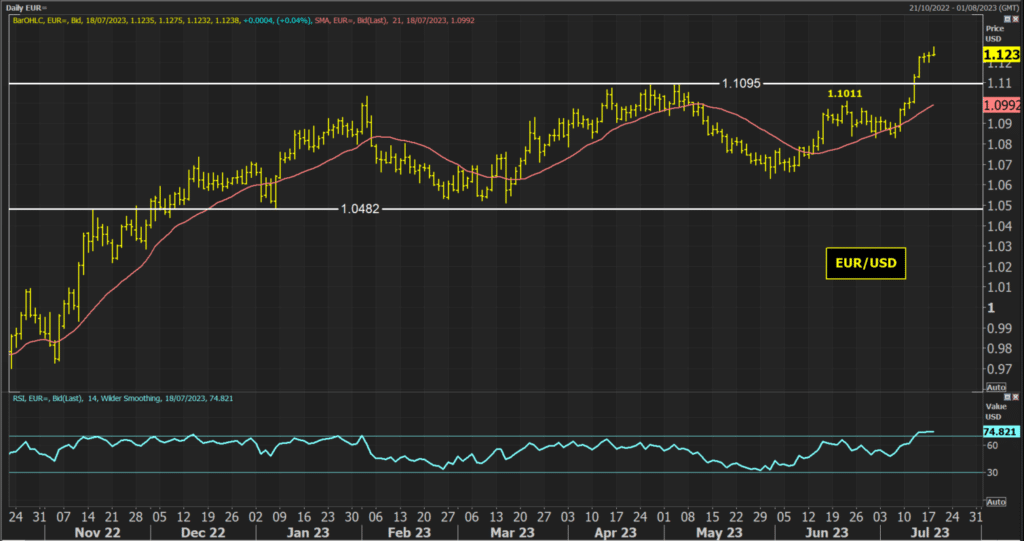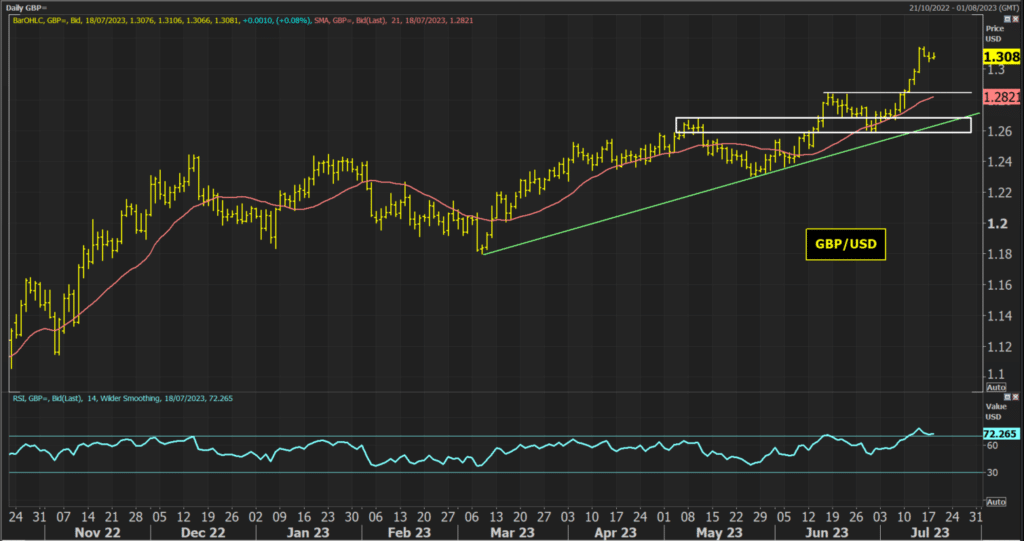There has been a significant shift in how markets now view the USD. The crucial data points of the past couple of weeks have put the dollar bulls massively on the back foot. A relatively weak Nonfarm Payrolls was followed by lower-than-expected inflation readings on US CPI and PPI. The selling pressure that has followed on the USD has been sharp and decisive. Although indicators are stretched in this move, any retracements are likely to be short-lived.
- US data drives a re-positioning in markets on Fed tightening
- The prospects of a limited retracement
- Technicals look stretched but a sustainable recovery is unlikely

US data drives a repositioning of Fed expectations
Whilst broad data surrounding the US economy is important, markets are particularly interested in the labor market and the inflation outlook. The labor market has continued to be solid, whilst we have been continually told by the Fed that inflation is not coming down fast enough.
So when the Nonfarm Payrolls data in June missed expectations for the first time in 15 months, this took trades by surprise. Add in a second consecutive month of downside surprise in the US CPI inflation data, along with a lower-than-forecast US PPI to boot, and markets have taken a view. The recent assertion from a series of communications from the Fed (such as the June FOMC and minutes, Fed Chair Powell’s Congressional testimonies and at Sintra) that two more Fed hikes were on the way in 2023, may need to be reassessed.
Here is a chart from CME Group FedWatch of the path of how market expectations on Fed rate hikes have moved in recent months. Whilst the prospect of one more rate hike and rates remaining high by the end of the year remains high, the potential for a second hike has dramatically reduced to just over 20%.

Pricing out of a second Fed rate hike whilst the ECB is expected to hike two more times and the Bank of England potentially even more, has put the USD under significant selling pressure.
The prospects of a sustainable near-term recovery on the USD are limited
So what could induce a retracement? The FOMC is in its Blackout Period now. This means that no FOMC members can speak about monetary policy. It was also interesting to see the reaction to the disappointing Chinese GDP data yesterday. This could have induced a USD turnaround. There was marginal USD recovery against AUD and NZD (the major currencies most sensitive to Chinese economic data) but there was limited (if any) traction for USD versus EUR, GBP or JPY.
Traders will be keeping an eye out for US Retail Sales and Industrial Production today, but these are data points that tend to have a limited lasting impact on the USD. The decisive view that has been taken from the payrolls report and inflation data is unlikely to be unwound to any great extent.
However, there is a chance that the technicals could play a role. The USD is oversold near term. Technical analysis on major USD pairs shows the Relative Strength Index (a measure of near-term momentum) on EUR/USD at 75. Although this reflects the strength of the selling pressure, it is stretched. Historically on EUR/USD, above 70 on the RSI tends to be very limiting. The RSI on GBP/USD is over 72, and again stretched. This could therefore limit the selling pressure on USD near term.
Are USD pairs set to retrace?
The recent sell-off on the USD has driven a decisive breakdown in the Dollar Index. Breaking below 100.78 has now opened the next support band between 97.70/99.40. The medium to longer-term implications of the breakdown are significant too. A downside projection from what was a seven-month consolidation rectangle suggests a potential target of 95.70/96.90 in the coming months.

Looking nearer term though a technical correction should not be ruled out. For the Dollar Index, a near-term unwind could see the overhead supply between 100.78/101.92 come into play. However, this would be a massive resistance area now. All the old stale bulls that were buyers will now be looking at their positions and feeling that any chance to take advantage of a near-term rally to close out even close to even would be a good opportunity. That is why I do not see a rally being sustainable.
The correction potential on EUR/USD is elevated with the RSI around 75. The breakout above 1.1095 has not yet had a pullback, whilst it is also interesting to see the market off its highs this morning. A pullback towards support between 1.1011/1.1095 cannot be ruled out near term. Although I would see that as a prime area for a buying opportunity once more.

Looking at GBP/USD we also see this pullback potential near term. The RSI is at 72 and is still in an area considered overbought. The latest breakout above 1.2848 leaves this as a potential pullback area. Anything that finds support around there and above the four-month uptrend and the 1.2590/1.2680 key support would be a strong opportunity to buy once more.
